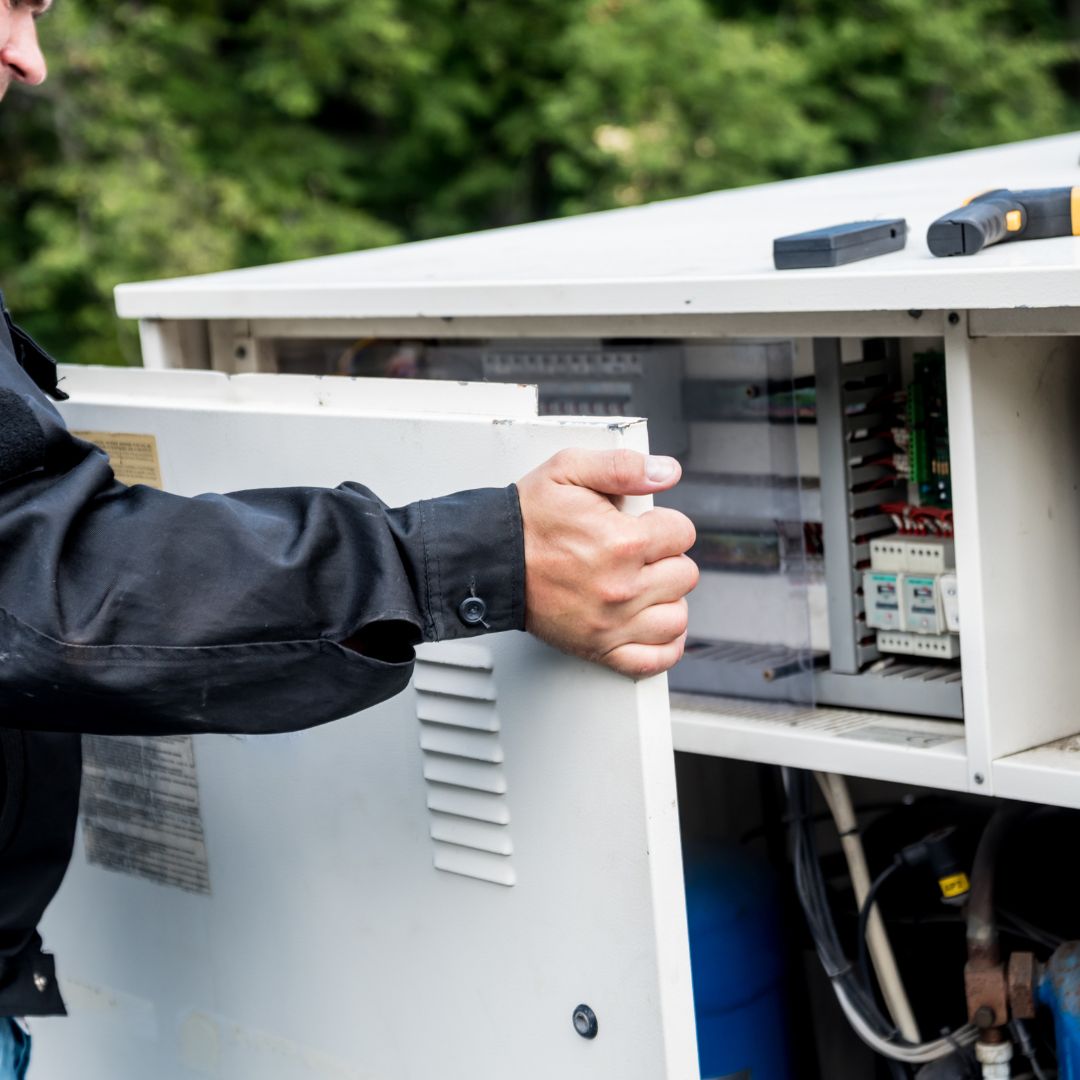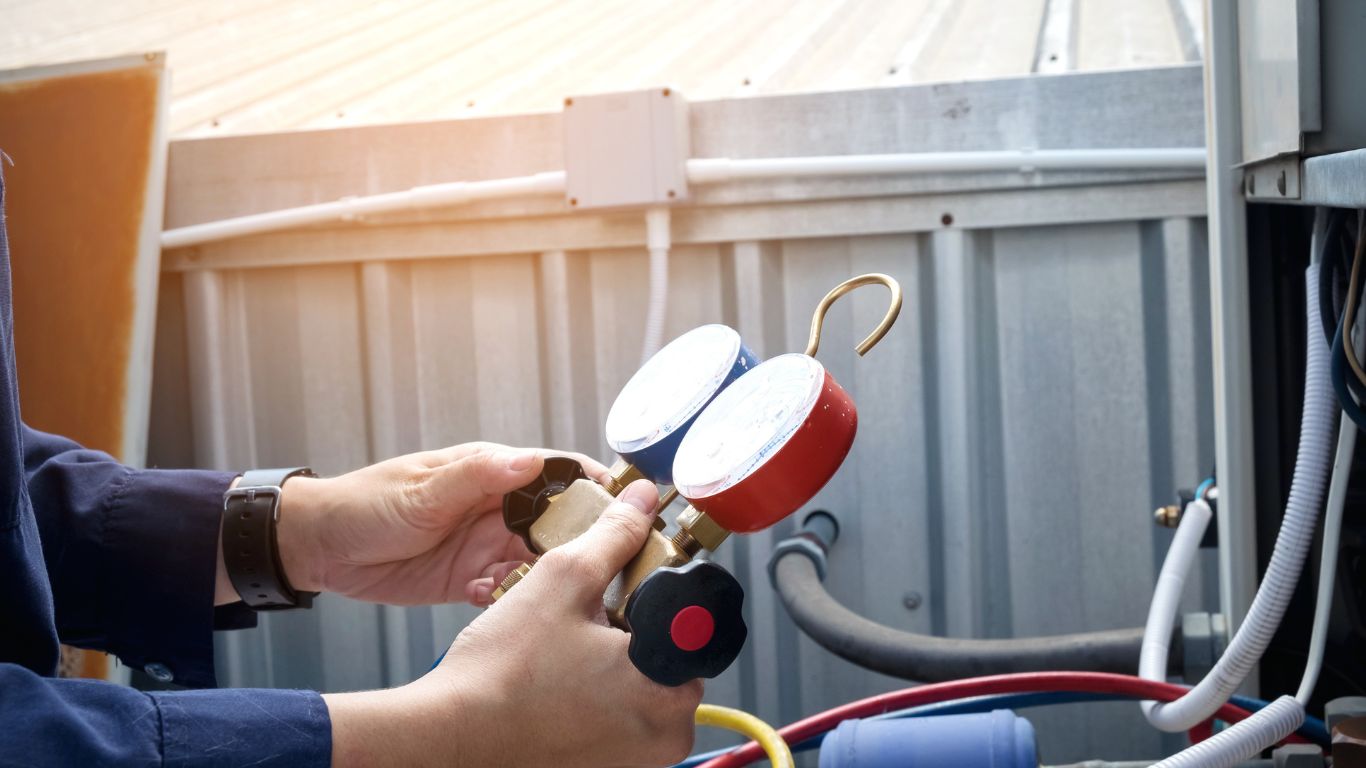Energy Efficiency Tips for Commercial Buildings in Melbourne
Energy Efficiency Tips for Commercial Buildings in Victoria
Considering the energy efficiency of your commercial space is an essential part of the puzzle when you’re looking looking to optimise energy use and reduce operational costs.
One key factor is a well-maintained commercial HVAC system, which helps create a comfortable environment, improves air quality, and ensures compliance with regulations.
Today we will explore effective strategies to enhance HVAC efficiency, minimise energy consumption, and lower the utility bills in commercial buildings
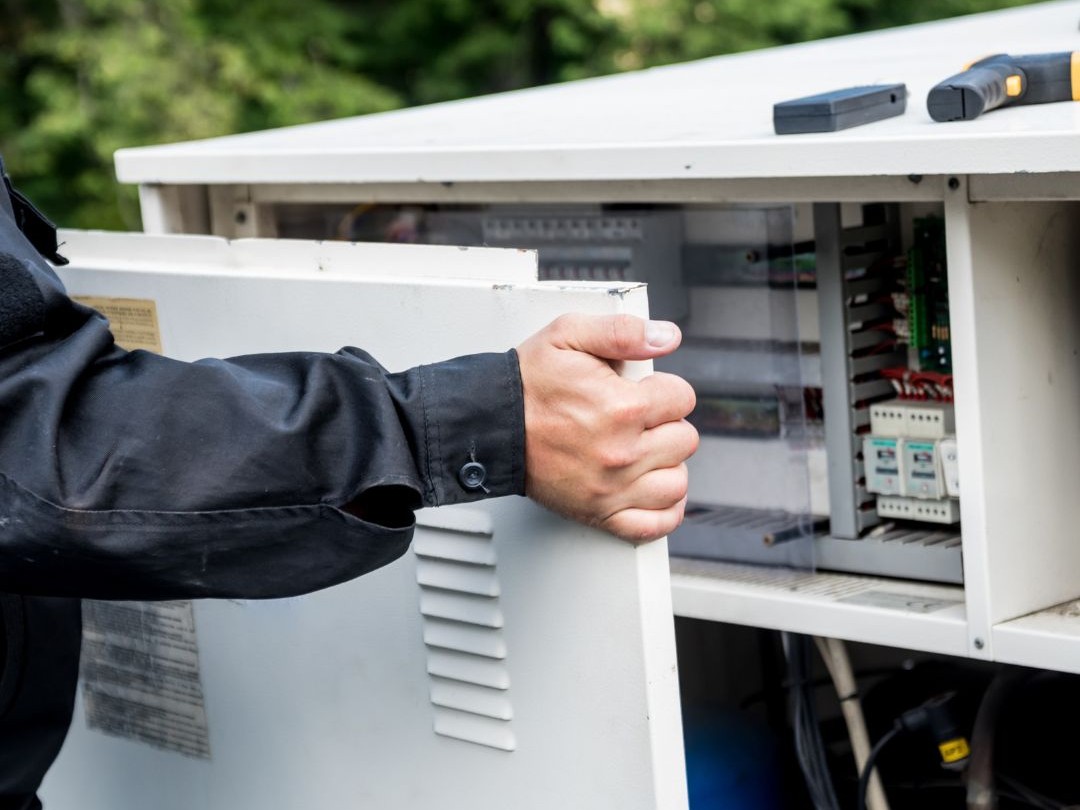
Understanding HVAC Systems in Commercial Buildings
A heating, ventilation, and air conditioning (HVAC) system regulates indoor temperature and air quality, ensuring a comfortable and healthy environment. Efficient HVAC systems not only enhance energy savings but also prevent issues like mould growth, moisture damage, and poor air circulation.
Regular HVAC maintenance, system upgrades, and smart technology adoption can significantly improve performance while reducing your energy costs.
1. Conduct a Comprehensive Energy Audit
A professional energy audit helps identify inefficiencies in your building’s HVAC system, insulation, and ventilation. Auditors assess energy usage patterns, pinpoint areas of energy waste, and recommend solutions to optimise efficiency.
- HVAC unit performance and age
- Building insulation quality
- Air leaks and ventilation efficiency
- Power consumption trends
2. Consider Upgrading to Energy-Efficient HVAC Systems
Older HVAC units often use more energy, be less efficient and struggle to maintain consistent temperatures. Upgrading to a high-efficiency HVAC system reduces energy consumption while improving comfort and air quality. Look for energy-efficient models with:
- Programmable thermostats that adjust temperatures based on occupancy
- Sensors for real-time temperature monitoring
- Remote control and automation via mobile app
Installing smart HVAC controls ensures efficient temperature regulation, reducing unnecessary energy use and lowering electricity costs
3. Invest in Smart HVAC Technology
Proper ventilation enhances indoor air quality and reduces strain on HVAC systems. Consider these strategies:
- Install energy recovery ventilators (ERVs) to improve airflow
- Increase natural ventilation where possible
- Ensure proper air distribution to maintain even temperatures
Efficient ventilation not only saves energy but also creates a healthier workplace environment.
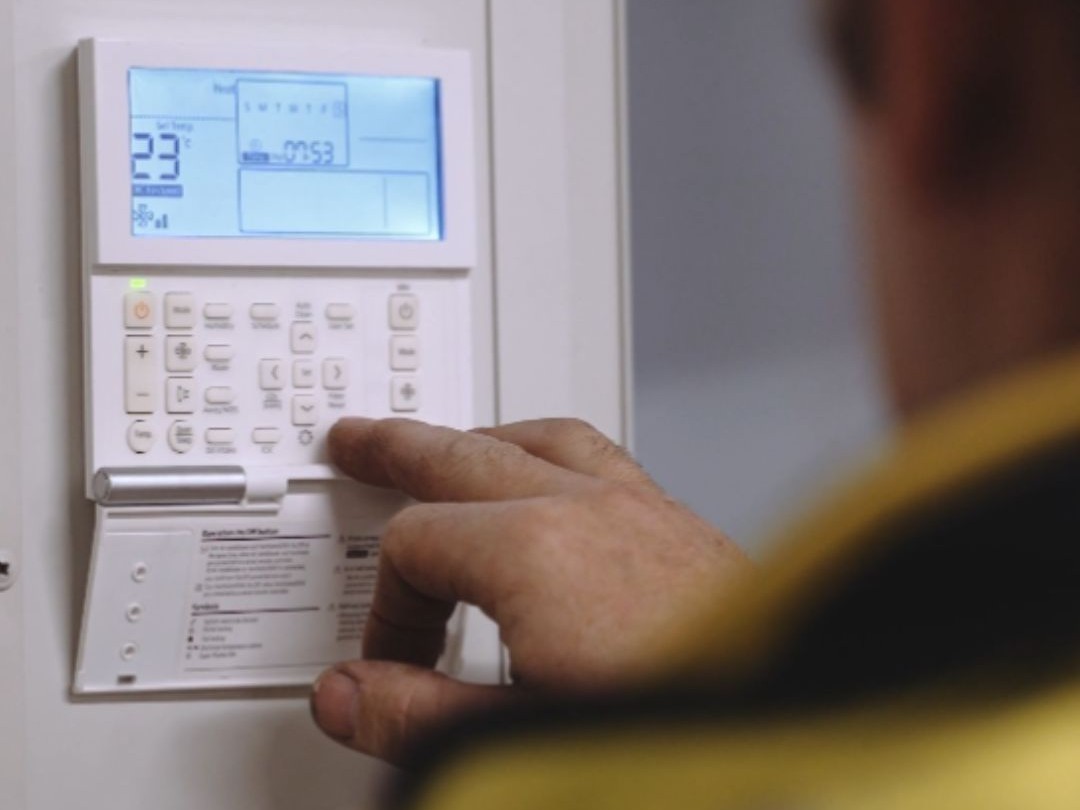
4. Improve Ventilation and Airflow Efficiency
Proper ventilation enhances indoor air quality and reduces strain on HVAC systems. Consider these strategies:
- Install energy recovery ventilators (ERVs) to improve airflow
- Increase natural ventilation where possible
- Ensure proper air distribution to maintain even temperatures
Efficient ventilation not only saves energy but also creates a healthier workplace environment.
5. Enhance Building Insulation
Proper ventilation enhances indoor air quality and reduces strain on HVAC systems. Consider these strategies:
- Sealing air leaks around windows and doors
- Using energy-efficient window glazing
- Adding insulation to attics and ceilings
6. Install High-Performance Access Doors
Invest in insulated access panels to maintain internal temperatures and prevent unnecessary air leaks. High-quality panels improve energy efficiency by limiting airflow disruptions in HVAC ductwork.
7. Implement Demand-Controlled Ventilation (DCV)
DCV systems adjust ventilation rates based on real-time occupancy levels, reducing energy waste. These systems optimise airflow based on demand, ensuring proper air exchange while cutting down on excessive HVAC usage.
8. Utilise Renewable Energy Sources
Integrating solar panels or other renewable energy sources into commercial buildings reduces dependence on traditional power grids. Benefits include:
- Lower long-term electricity costs
- Reduced carbon footprint
- Higher sustainability ratings (e.g., LEED certification)
9. Schedule Regular HVAC Maintenance
Routine maintenance is crucial for HVAC efficiency and longevity. A professional HVAC technician can:
- Clean air filters and improve airflow
- Check refrigerant levels to prevent energy waste
- Inspect and repair leaks in ductwork
- Calibrate thermostats for optimal temperature control
Preventative maintenance ensures peak HVAC performance and extends system lifespan
Optimising HVAC systems in commercial buildings not only reduces operational costs but also creates a more sustainable and comfortable indoor environment. By implementing smart technology, improving insulation, upgrading HVAC units, and maintaining regular servicing, businesses in Victoria can significantly enhance their energy efficiency while lowering carbon emissions.
For expert HVAC services tailored to commercial buildings, contact our team to discuss how we can help you to achieve long-term cost savings and compliance with Victoria’s energy regulations.
Understanding the R22 Refrigerant Phase-Out
What is R22 Refrigerant?
R22, also known as HCFC-22, is a hydrochlorofluorocarbon (HCFC) widely used as a refrigerant in small and packaged air-conditioning systems. It has been a standard in residential and commercial HVAC units for decades due to its efficiency and reliability. However, its environmental impact has led to global regulatory changes that are affecting homeowners and businesses that still rely on R22-based systems.

Why is R22 Being Phased Out?
The phase-out of R22 is a direct result of its harmful environmental effects. R22 is classified as an ozone-depleting substance under the Montreal Protocol on Substances that Deplete the Ozone Layer, an international agreement designed to protect the Earth’s atmosphere. HCFCs, including R22, contribute to the depletion of the ozone layer, which protects life on Earth from harmful ultraviolet (UV) radiation.
In response to these environmental concerns, Australia, along with other countries, has implemented a gradual phase-out of R22:
- 2016 Onward: Australia began progressively reducing R22 imports.
- 2020: The majority of R22 imports and production ceased, with small volumes still permitted for maintaining existing systems.
- 2030: A complete ban on R22 supply is expected, meaning businesses and homeowners must transition to alternative refrigerants or upgrade their systems.
How Does the R22 Phase-Out Affect Your Air Conditioning System?
If your air conditioning system uses R22, the phase-out has significant implications for costs, maintenance, and long-term viability. Here’s what you need to know:
- Rising Costs of R22
The supply of R22 is limited, and as availability decreases, prices continue to rise. If your system requires a top-up due to a refrigerant leak, expect significantly higher costs as R22 becomes scarce. - Repair vs. Replacement – What’s the Best Option?
If your system experiences a refrigerant leak, you’ll need to decide between repairing it or replacing it with a newer, more efficient unit. Consider these factors: - Repair & Re-gas: If the leak is minor and your system is relatively new, repairing and re-gassing may be an option. However, this is only a short-term solution as R22 becomes harder to obtain.
- Retrofitting: Some systems can be retrofitted to use an alternative refrigerant. However, this can be costly and may not always be the most energy-efficient choice.
- Replacement: If your system is over 10 years old, replacing it with a modern unit that uses an environmentally friendly refrigerant (such as R-410A, R-32, or R-454B) is often the best long-term investment.
- Can You Still Use Your R22 System?
Yes, you can continue using your R22 system as long as it remains operational. However, you should be aware that: - Regular maintenance is essential to prolong its lifespan.
- Future repairs may be costly due to the rising price of R22.
- Upgrading to a more efficient system may save you mone
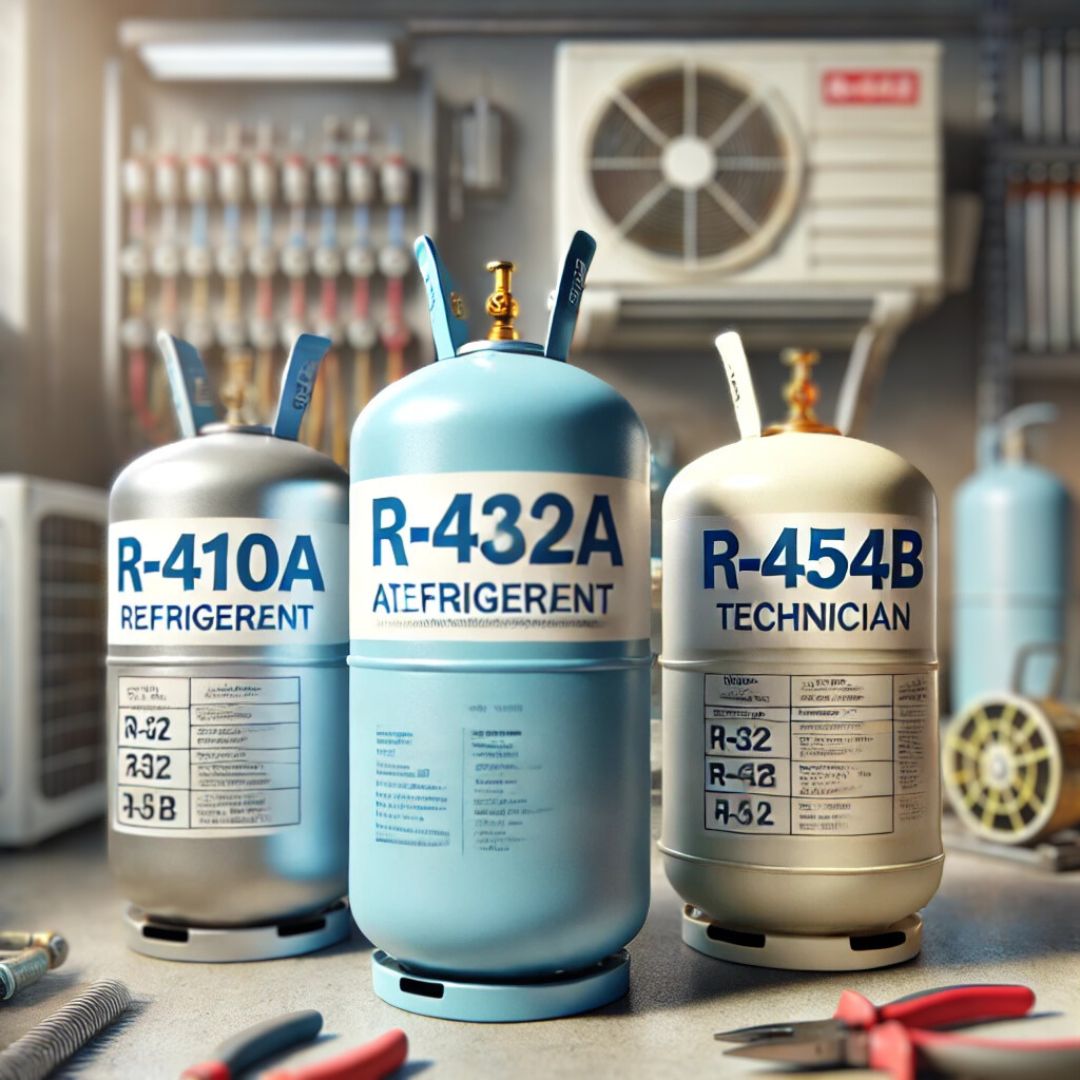
What Should You Do Next?
- Assess Your Current System: Determine if your air conditioning unit still uses R22 and consider its age and efficiency.
- Consult an Expert: Speak to a qualified HVAC technician about your options, whether it’s maintaining, retrofitting, or replacing your system.
- Plan for the Future: If your system is aging, now is the best time to plan for an upgrade before R22 becomes completely unavailable.
The phase-out of R22 is a necessary step toward environmental sustainability, but it presents challenges for homeowners and businesses with existing R22-based systems. Understanding your options can help you make an informed decision on whether to maintain, retrofit, or replace your unit.
If you need expert guidance on your air conditioning system, contact us today for a professional assessment and tailored recommendations.

